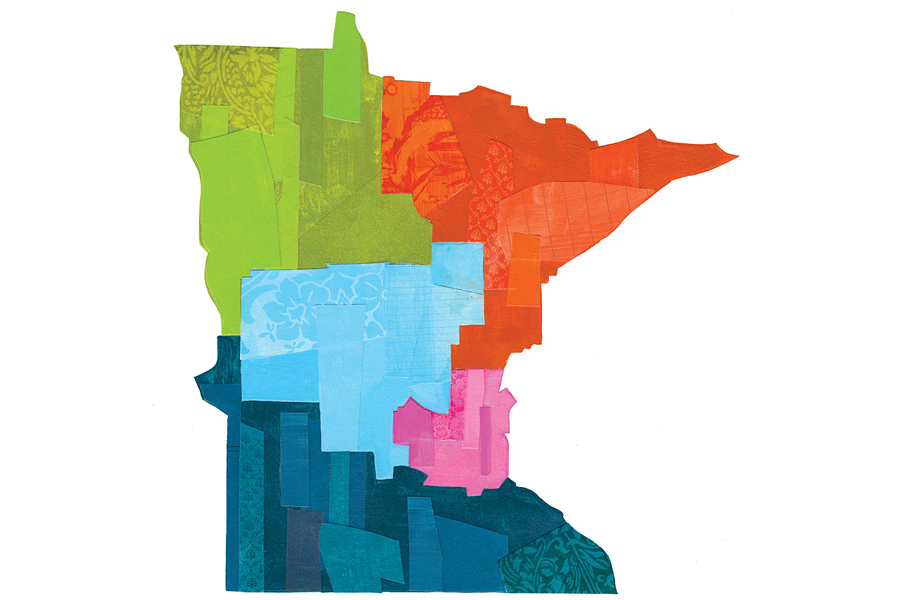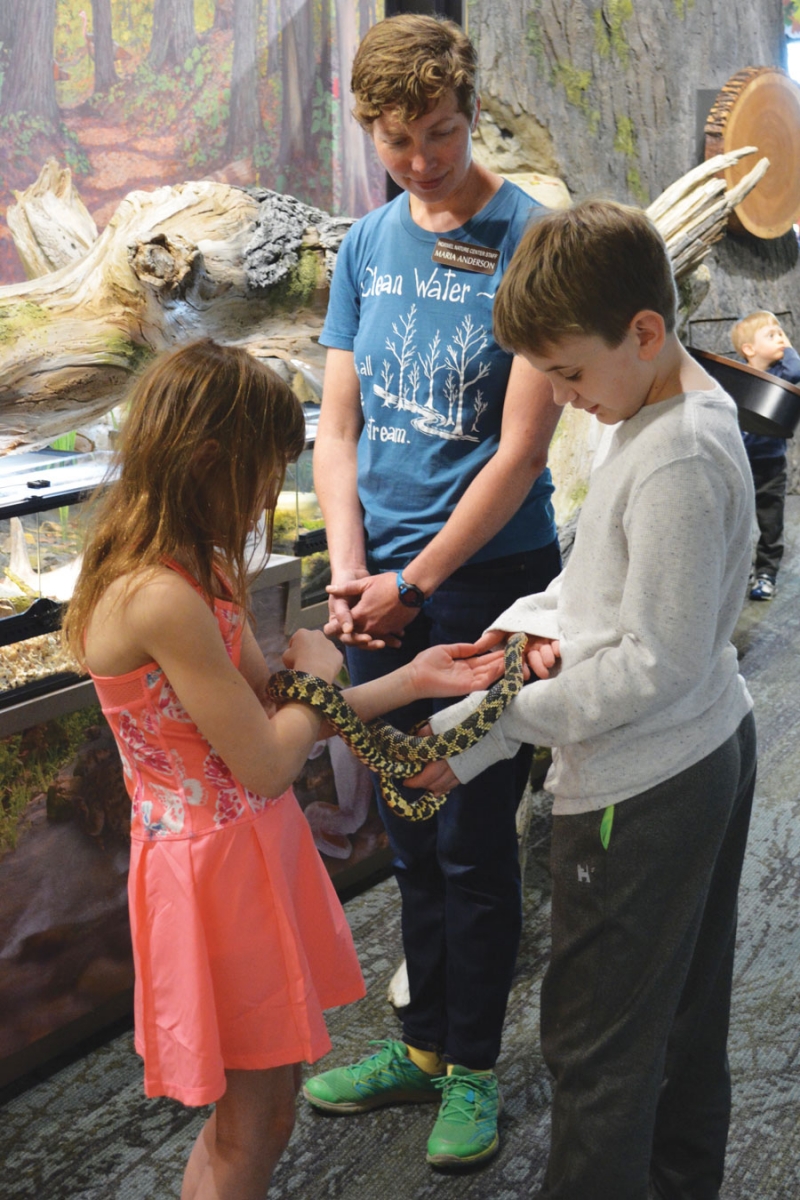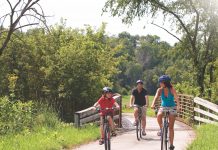
illustration by darren booth
Northwest
Moorhead
After cooking at both fast-food and five-star restaurants, brothers Patrick and Tony Frost opened their Potato Brothers food truck in Moorhead. They serve the area (already a top potato-producing region) potato-based foods such as sweet-potato pancakes, breakfast tacos, and the Minnesota classic, tater-tot hotdish. Is it mere coincidence that the brothers attended a local high school with a spud for a mascot?
Northeast
Lake Vermilion
In 2010, the state of Minnesota bought 3,000 acres of land on Lake Vermilion from U.S. Steel to prevent the development of vacation homes and turned the area into Lake Vermilion State Park. Construction of a park campground began in 2015 and finished just in time for this year’s fall foliage, accommodating more than 250 guests in tents and rec vehicles ready to enjoy Minnesota’s fifth largest lake.
Central

Milk & Honey Ciders
Courtesy of Milk & Honey Ciders
St. Joseph
After five years selling their product wholesale, Milk & Honey Ciders has opened a new sampling room near St. Cloud where eight varieties of cider are always on tap. Visitors can sample ciders made from uncommon apples, such as the Newton Pippen, a slightly tart apple popular in the 18th century, or the Northern Spy Apple, which originated in the early 1800s and is often used in desserts. Sampling room visitors can tour the young orchard, cellar, and apple-pressing operation.
Metro
St. Paul
Wonders Ice Cream Co. and Sota Hot & Cold opened in late summer to serve a trendy food new to the region: rolled ice cream. Originating as a street food in Thailand, the dessert made its way to the U.S. coasts in 2015. Also known as “stir-fry ice cream,” it’s made by pouring flavored cream onto a frozen platter. Once frozen, the dessert is scraped off the platter in long, thin, curling sheets.
Southern

Jay C. Hormel Nature Center
photo by savanna dahl
Austin
The Jay C. Hormel Nature Center has opened a new interpretive center, largely funded by local food-industry giant Hormel Foods’ foundation. Families fresh from a hike on the preserve’s 500 acres can now learn about the area’s ecology through indoor displays, including a model of Minnesota’s prairies, where visitors walk under the prairie diorama before emerging in a clear plastic observation dome at the center. Other exhibits include live animals, games, and a play area.






